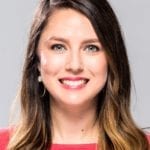
Have you used Google Trends before?
Even if you have, you’re probably not familiar with all the ways it can help your marketing strategy. In this blog, our VP of Product and Marketing, Danny Conlon, will explain what it is, how it works, and practical tips on how to use Google Trends to meet your digital marketing goals.
What You’ll Learn:
- What is Google Trends?
- Google Search Functions to Know
- 7 Ways to Use Google Trends in Your SEO Strategy
What Is Google Trends?
Google Trends is a free, interactive tool by Google that allows you to see how often keywords have been searched over time. Additional useful data includes:
- Geographical Insights – Google Trends will tell you where the query is most popular. You can search by country and then sort by subregion, metro or city.
- Related Queries and Topics – This tells you what users who searched for that term are also searching for. This can be viewed by “top,”which is the most popular topic, or “rising,” which has the biggest increase in search frequency since the last period.
- Comparison – This feature lets you compare search volumes of up to 5 terms to see how they trend against each other over time.
Imagine you’re curious about what’s stirring up conversation in your digital neighborhood. Google Trends is like your friendly neighborhood watch, keeping an eye on topics that are getting the most chatter.
Type in anything–let’s go with “underwater welder”–and this tool acts like a popularity meter. It shows you a chart that rises and falls, indicating when users searched for this term the most.
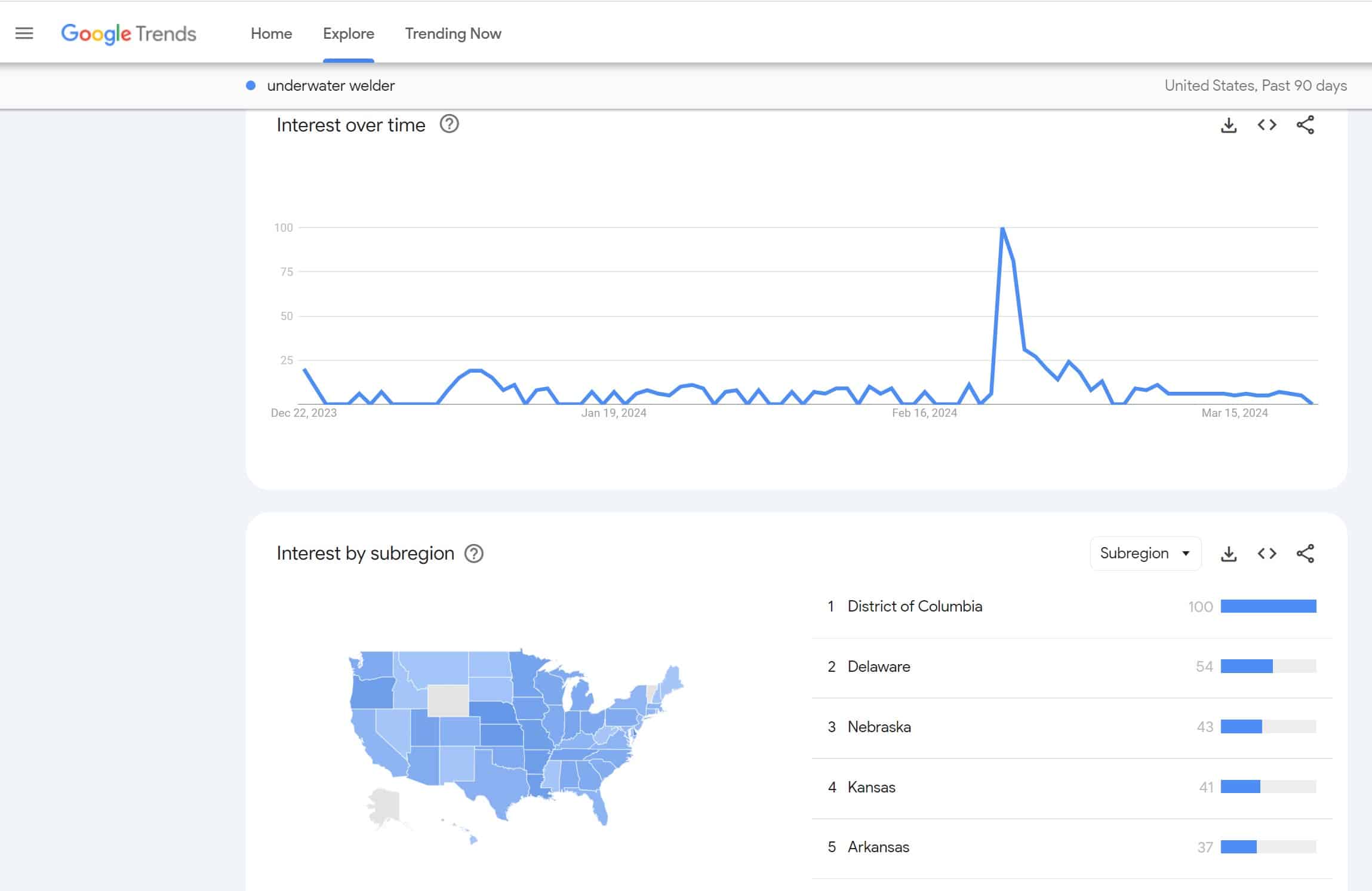
Search Query for Underwater Welder
Google Trends scores searches from 0 to 100, making it easier to digest. If “underwater welder” hits 100, it’s basically the star of the show at that moment. A zero? Well, that’s when almost no one’s talking about it.
In the example above, you might be asking, why “underwater welder.” In case you missed it, there was a TikTok trend where one would call a parent or significant other telling them they got into an underwater welding program with Exxon that paid well.
When did this trend happen? Google trends above show it was indeed late February, and proved how users would turn to Google to search for underwater welders around the time of this trend.
So why does this matter? Imagine I was the owner of a career website. This would have been a great opportunity to publish content about an underwater welding career to help educate and increase my own website’s visibility.
In a nutshell, Google Trends helps you tune into the internet’s interests, empowering you with knowledge that can elevate your digital marketing strategy.
Google Trends Search Functions to Know
The more refined you make your search, the more useful it may be.
You can customize keyword data using Google Trends in the following ways:
- Adjusting Time Range: Google Trends allows you to adjust the timeframe for your search term, ranging from ‘Past Hour’ to ‘2004 – present’. This flexibility enables you to observe short bursts of interest or longer-term trends.
- Selecting Regions: You can specify the geographical region for your search query from worldwide down to individual cities. This feature is particularly valuable for conducting research for local markets, helping you gather targeted insights.
- Choosing Categories: Google Trends enables you to refine the category for your search terms, useful when studying trends within very specific topics or industries.
- Choosing a Type of Search: Select between web search, image search, Google Shopping, or YouTube search.
My Expert Insight on Google Trends
There are three main scenarios in which I use Google Trends the most. The first is essentially the scenario above. Google Trends gives real-time insights into trending topics and keywords—enabling content and strategy optimization that your audience is currently looking for.
The second scenario is to plan content throughout the year to capitalize on when certain topics are the most popular and inform my strategy of seasonality trends.
The third is as a reporting tool to inform brand awareness of how seasonality may have impacted metrics. For example, if my website saw a huge increase in traffic but keyword rankings stayed the same, I can check on Google Trends to see if my brand or main keywords were suddenly more popular during that period. It also allows you to see the effects of traditional branding campaigns on your online presence.
I recommend regularly checking Google Trends for updates in your industry and incorporating your findings into your content calendar, ensuring your marketing efforts are as current and relevant as possible.
Now let’s dive into some more specifics.

Danny Conlon – Expert Insights on Google Trends
7 Ways to Use Google Trends in Your SEO Strategy
Ready to turn trends into action? Let’s go!
#1: Google Trends for Keyword Research
The bedrock of SEO strategy is choosing the right keywords and with Google Trends, you get to see which terms are gaining traction.
Start by entering a keyword and watch the magic happen—Google Trends will show you how interest in that term has fluctuated over time. This is your cue to select keywords that are on the rise or consistently popular, ensuring your content stays visible and relevant.
In particular, it’s a great tool not only for finding the popularity of a given search term but also for finding long-tail keywords to help inform your content strategy.
Google Trends also gives you the ability to compare the popularity of two or more keywords alongside each other.
For research, this is a great way to rank your target keywords in order of importance. You can pick out the most valuable keywords for your business, decide which phrases to prioritize, and evaluate whether different keywords deserve their content.
For example, you could look up the difference in popularity between related terms like “SEO” and “PPC.”

How to Use Google Trends: Compare and Contrast Keywords
From there, you would want to do further research into the overall search volume and competition level. You may very well find that because SEO is more popular, it also comes with much steeper competition. Remember that popularity can hinder almost as much as it helps!
Rather than targeting a highly competitive term, it may be more beneficial to go after the less popular of the two if you find it still has a relatively high search volume.
#2: Content and Topic Ideas
Stuck in a rut for what to write about next? Google Trends can be your muse.
By exploring trending queries, you can tap into topics that are current and likely to engage your readers. Use this tool to gauge what’s capturing public interest right now or look at historical data to predict future trends.
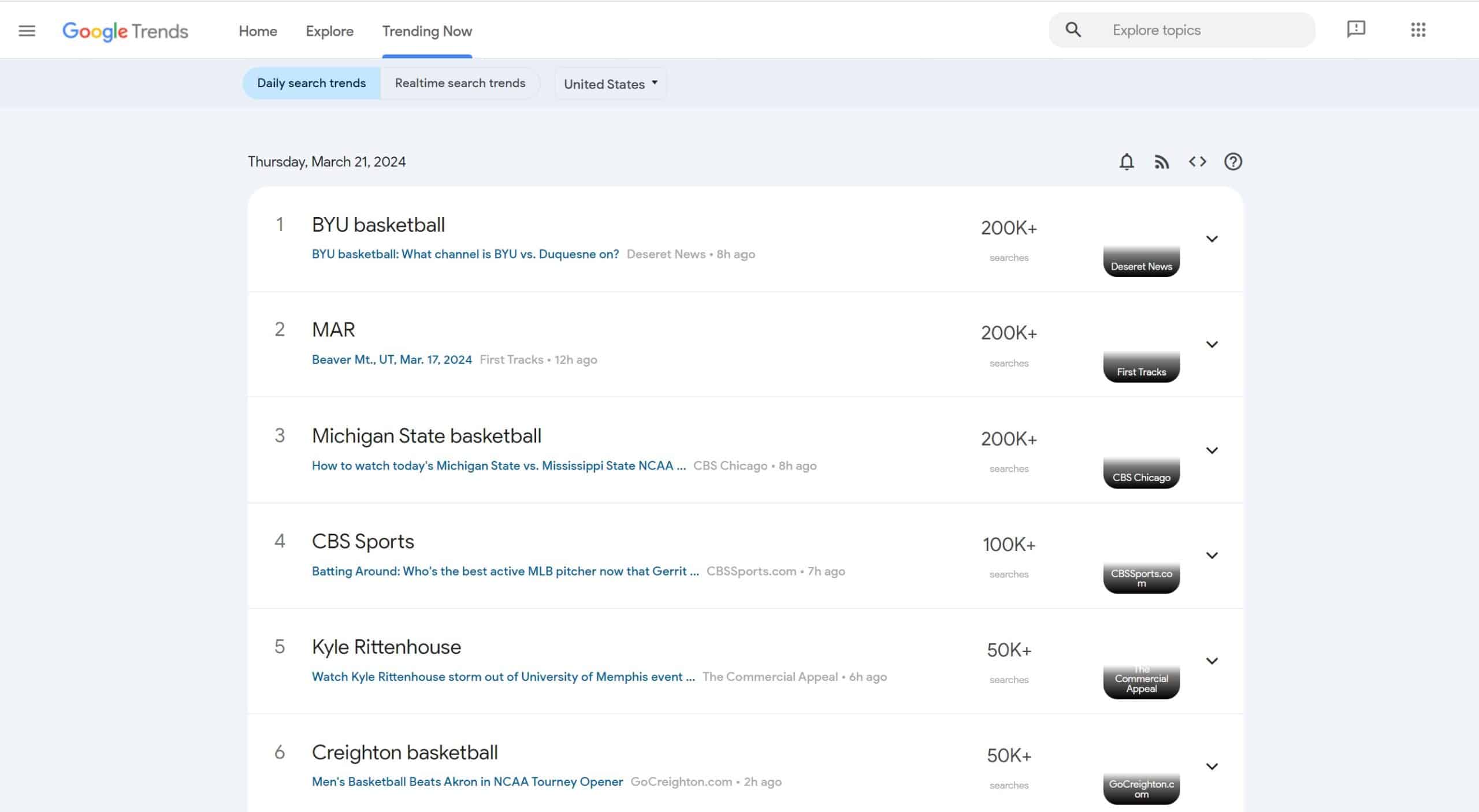
Google Trends – Trending Now
Crafting content around these areas not only positions you as a thought leader, but also aligns your message with your audience’s current interests.
Keep in mind these queries won’t always be relevant for your brand, but I challenge you to get creative. Maybe sometimes there won’t be a trend worth writing a blog about, but maybe it’s worth a video or social media post.
#3: Seasonal Navigation Trends
Every season has its rhythm and patterns that shape user behavior online.
Google Trends helps you understand these seasonal shifts by highlighting search patterns that align with times of the year.
For example, take a term like “cold remedies.” No surprise here: peak search season for cold remedies in the US is consistently October to February.
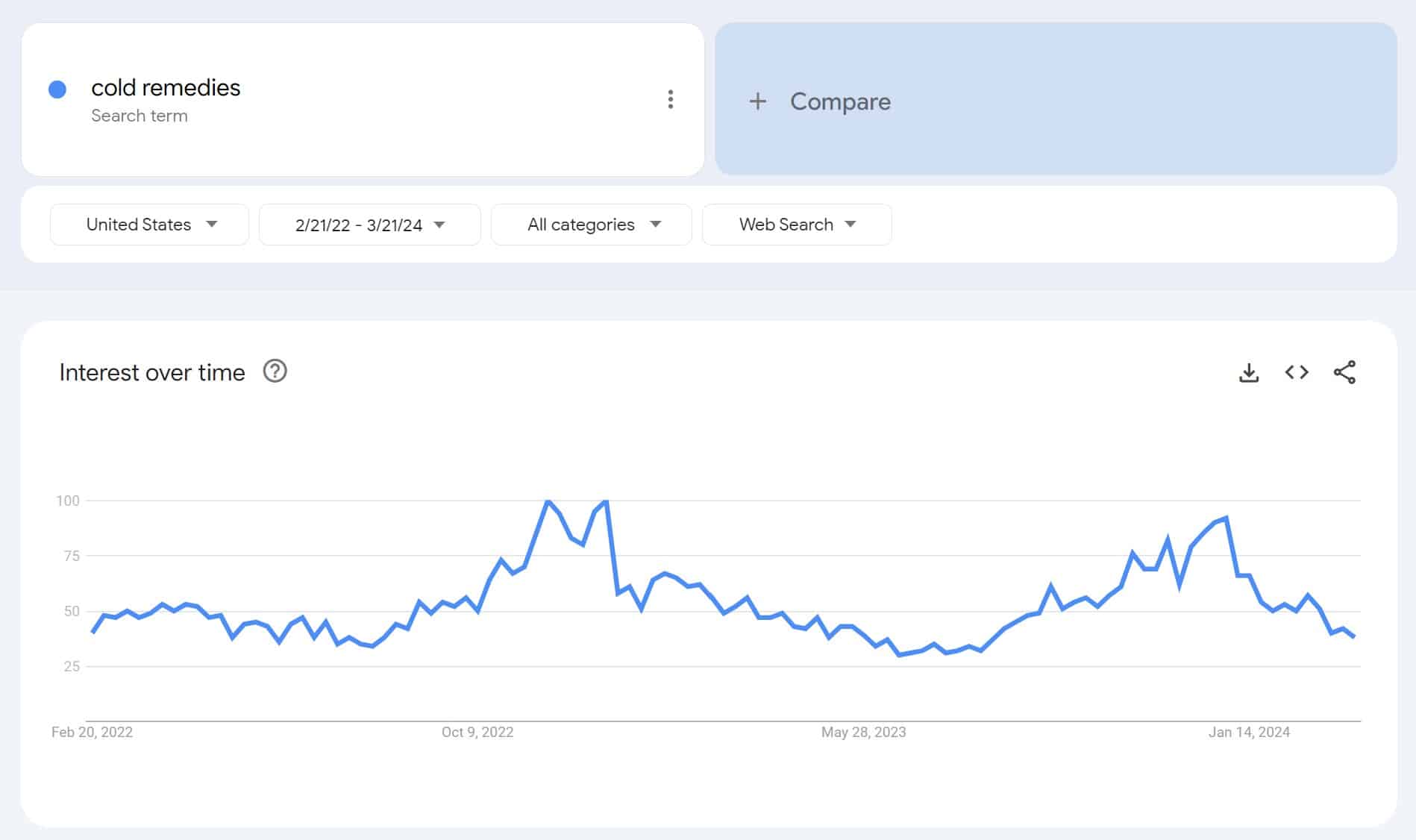
2 Year Trends for “cold remedies” Search
Plan your content and marketing campaigns to coincide with these trends, and make sure your business stays ahead of the seasonal curve.
For example, if I owned a healthcare blog, I would want my content on cold remedies to be done and written by the time it starts trending, and heavily promote during those peaks.
#4: Google Trends for Local SEO
Geography also affects search trends all year round. More than likely, there’s a higher demand for your product or service in a certain area.
For businesses looking to make a mark in their local community, Google Trends is essential. It shows you what’s of interest to people in your area, giving you localized insights that can shape your local SEO strategy.
For example, if you sell sports equipment and want to know where to find the best place to sell ski boots is, you could do so by plugging the keyword into Google Trends.
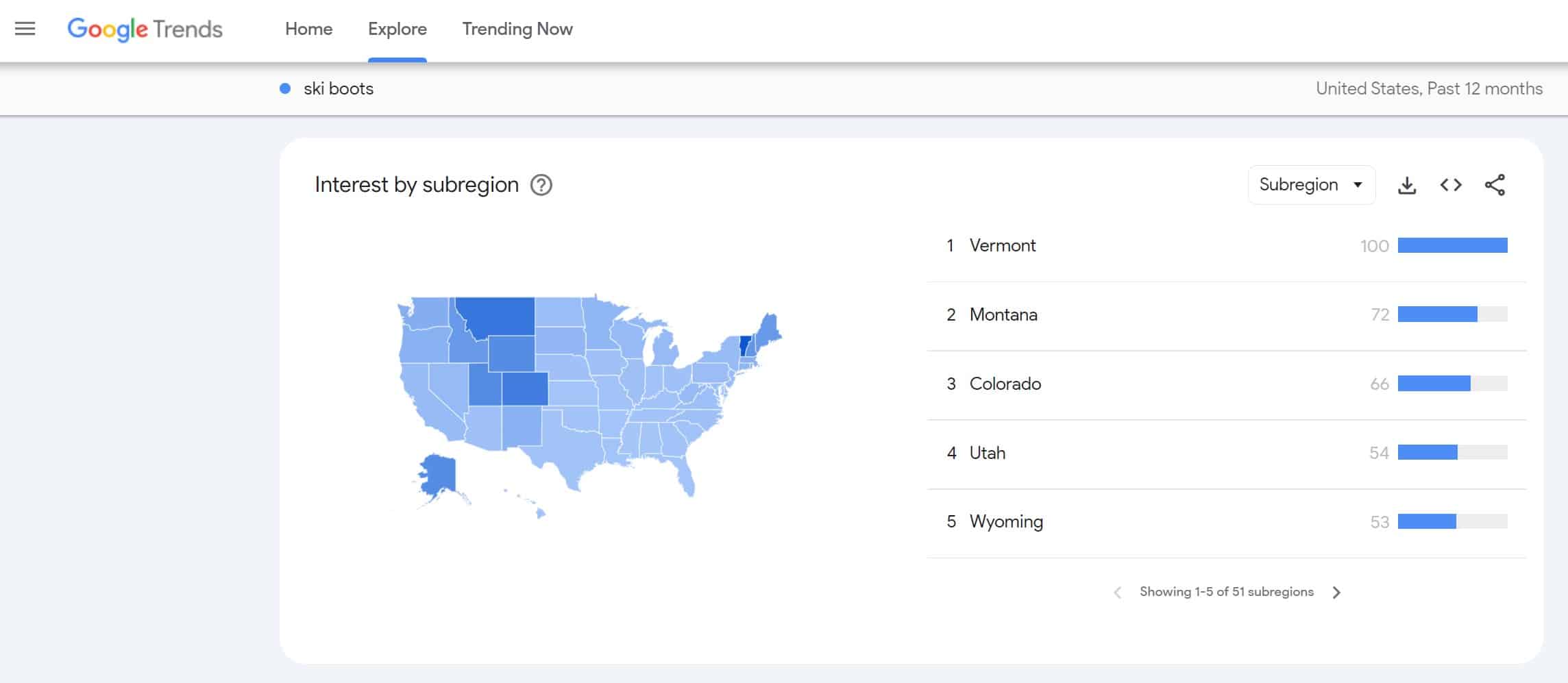
Google Trends Interest By Subregion
Here, you can again view data based on state, city, and metro to get as narrow an audience as possible.

Google Trends Interest Broken Down By City
Then, when you’ve uncovered the areas where searches for that keyword or most popular, you can run local campaigns during peak popularity. You might even want to create local pages like “ski boots in keystone,” “ski boots in Breckenridge,” etc.
Google is primarily concerned with user experience and relevance. When you add location information to your content, you could improve its relevance for your target areas. So Google will potentially show your content to more people in those areas.
#5: Competitor Research
Curious about how you stack up against the competition?
Google Trends can help you size up the landscape by comparing search interest in your brand versus your competitors.
You can see who’s leading the way in public interest and why, which can help you pinpoint areas of your strategy that need some work, likely primarily brand awareness.
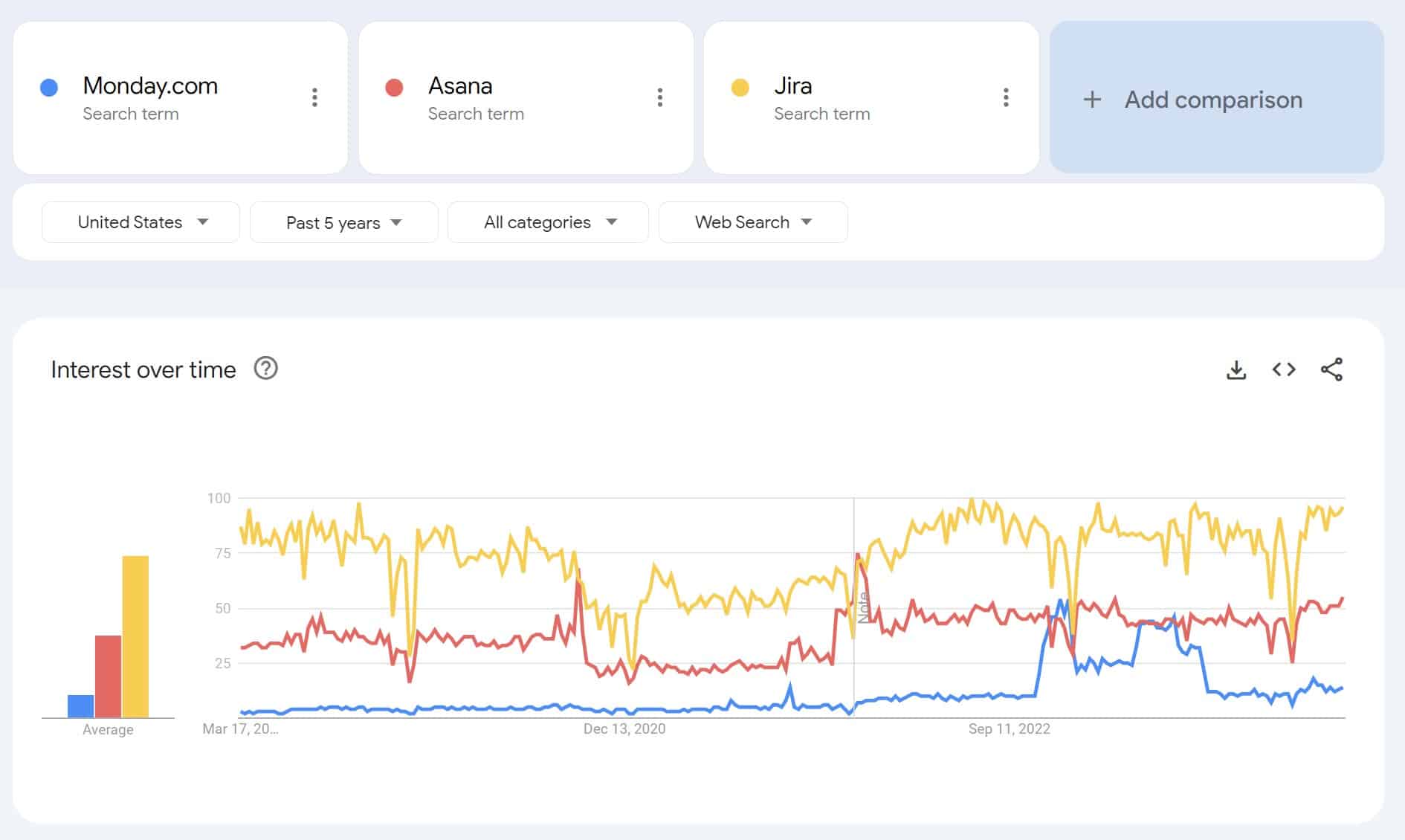
Using Google Trends to Compare Competitors
#6: Using Google Trends to Investigate Traffic Dips
Have you ever experienced a sudden traffic dip to an otherwise steady blog post?
You may find that a search term that once experienced a super surge in volume simply isn’t popular anymore.
Case in point: a fidget spinner.

Identify Dips in Content Traffic Based on Trends
Notice a very clear drop-off point where the keyword seems to drop off entirely – with no recovery in sight.
In that case, it’s probably a post not worth wasting a refresh on. However, if you are using seasonal keywords or expect traffic to pick up again later, make sure you continue to monitor Trends. Think about using related keywords to give the post a boost during its off-season.
#7: Creating SEO Topic Clusters
Google Trends allows you to see related topics and related queries to the keyword you searched. This could help inform what other subtopic pages you should create. Use the correct internal linking structure and voila, you have a topic cluster based on trending terms your audience is looking for.
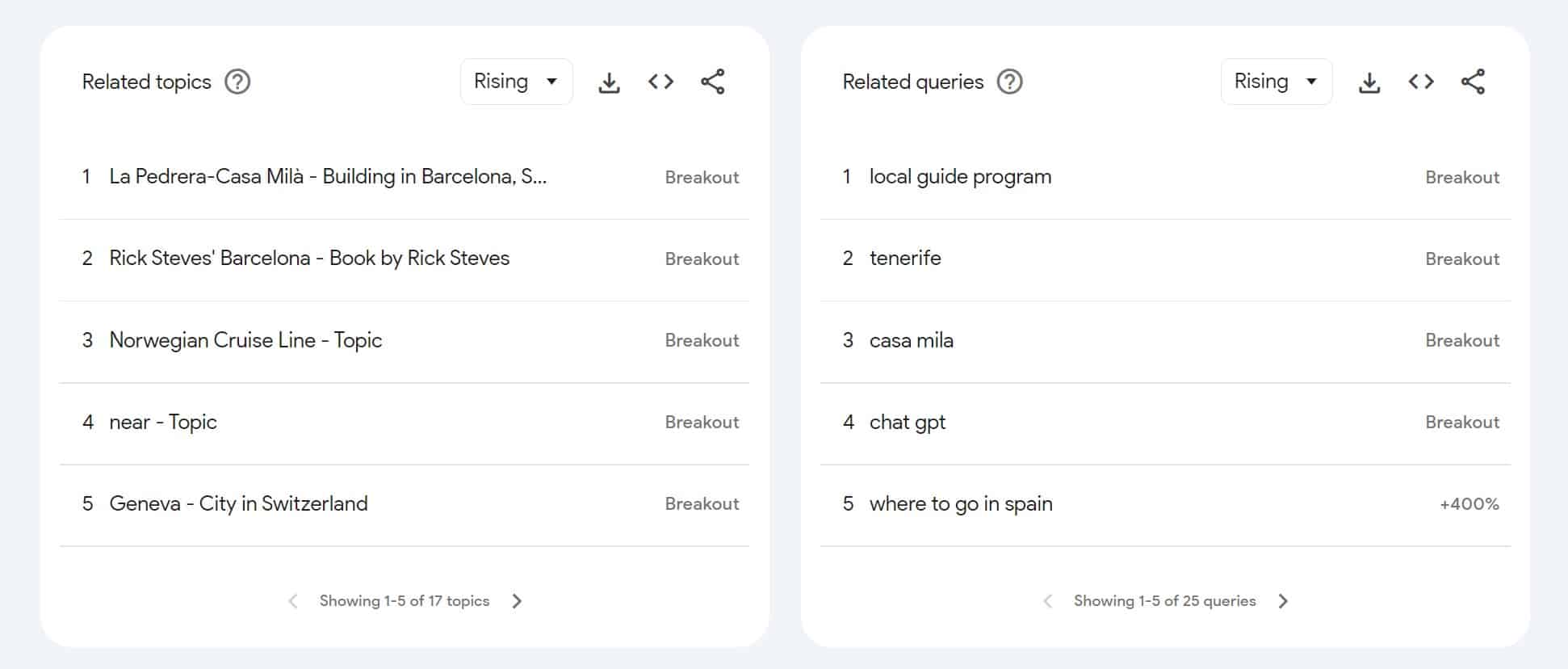
Example Query for Barcelona Itinerary
In this example for the query “barcelona itinerary,” if I owned a travel agency, these are related topics and queries I could also write content on and link it back to my parent page to create a cluster.
Final Thoughts on Google Trends
So how accurate is Google Trends? For starters, let’s remember that Google Trends Data is not a scientific poll and shouldn’t be confused with polling data. With that being said, it’s been proven to be pretty accurate at reflecting spikes in interest. However, Google Trends data should only be one of the many data points you look at when informing your SEO strategy.
Keep in mind that Google Trends isn’t the be-all and end-all SEO tool – it’s got some blind spots.
Hundreds of businesses use Ignite Visibility to help navigate the latest digital marketing trends, and use this to inform a strategic digital marketing roadmap. Whether you’re a local business owner or an international corporation, we’re here to support your business goals.
Ignite can help your brand:
- Find Great Keywords: Dive into the world of data-driven keyword research to uncover what your audience is searching for, allowing you to craft content that’s both relevant and timely.
- Create Buzzworthy Content: Use the insights from Google Trends and other digital marketing tools to anticipate and capitalize on shifts in consumer behavior, so your content stays fresh and, more importantly, sought after.
- Catch Seasonal Waves: Discern the predictable patterns through the year and align your marketing efforts with when interest in your products or services naturally peaks.
- Boost Local SEO: Reveal location-specific keyword trends, empowering you to capture the local market with regionally optimized content.
- Keep an Eye on the Competition: Position your brand ahead of the competition by analyzing search trends, giving you the foresight to pivot your strategies effectively.
Ready to connect more authentically with your audience? Get started today with a free proposal!

